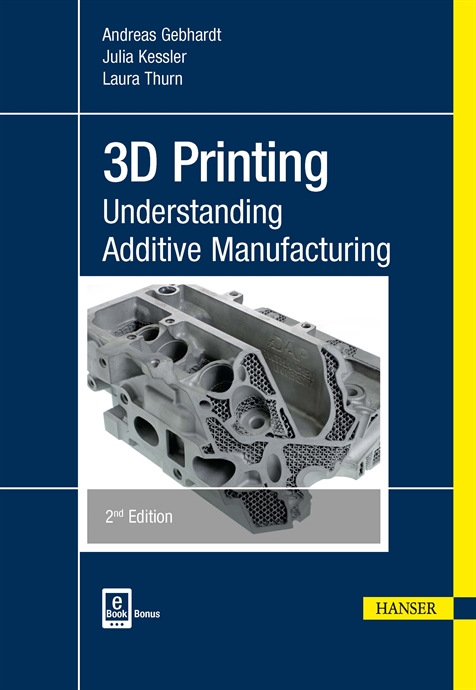The aerospace industry recently celebrated the 75th anniversary of supersonic flight. Chuck Yeager broke the sound barrier on Oct. 14, 1947, aboard the Bell X-1 rocket plane.
Ever since, engineers and test pilots equipped with the “right stuff” have been pushing the envelope. The next frontier is hypersonic flight, with aircraft moving at Mach 5 (more than 3,000 mph) or higher.
Travelling more than twice the speed of supersonic designs, hypersonic aircraft represent the cutting edge of aerospace engineering. For propulsion, they rely on a new type of engine called a scramjet, in which combustion takes place while the air passing through it is moving at high speed.
Scramjets use their own geometry and speed to compress the air passing through. They can reduce the overall weight of traditional jet engines by eliminating moving parts, such as turbine blades.
Aerospace engineers envision hypersonic airliners that could fly much higher and faster than the Concorde. They would enable passengers to cross the Atlantic Ocean in less than two hours and the Pacific Ocean in less than three hours, while cruising comfortably at 95,000 feet. The military is also interested in the technology for various defense applications, such as missiles and unmanned surveillance aircraft.
However, hypersonic flight requires complex fluid dynamics and materials that can withstand intense heat, shock waves and vibration. Aerodynamics, temperature and vibration play major factors. It also requires new types of production techniques.
Despite those huge challenges, the technology has spawned a variety of start-up companies, such as Destinus, Hermeus, New Frontier Aerospace, Radian Aerospace and Venus Aerospace.
One of the companies leading the way is Hermeus Corp., which is developing planes for both commercial and military applications.
In 2021, the U.S. Air Force awarded Hermeus a $60 million contract to develop three unmanned aircraft, including the hypersonic Quarterhorse. The start-up recently passed a major milestone when it successfully fired a turbojet-ramjet engine dubbed Chimera.
The goal of Quarterhorse is to validate the Chimera engine in-flight and break a decades old record held by the Lockheed SR-71 Blackbird. Before retiring in the early 1990s, the legendary aircraft flew from Los Angeles to Washington in just one hour (ever since, it has been on display at the Smithsonian National Air and Space Museum).
Quarterhorse’s maiden flight is scheduled to take place sometime next year. Hermeus also hopes to have a larger passenger version, dubbed Halcyon, ready by the end of this decade.
Along the way, the company plans to develop a series of planes, similar to SpaceX’s development of its Dragon, Falcon and Starship rockets. In addition to Halcyon and Quarterhorse, Hermeus engineers are working on Darkhorse, an autonomous aircraft that will serve defense and intelligence customers.
One hurdle was recently cleared when the Chimera engine underwent a series of successful tests at Notre Dame University’s Turbomachinery Laboratory. Heated air was used to simulate high-Mach temperatures and pressures.
High-Tech Engine
Chimera is a turbine-based combined cycle (TBCC) engine that is a hybrid between a turbojet and a ramjet. The ability to switch between these two modes will enable Quarterhorse to take off from a regular runway and then accelerate up to hypersonic speeds.
Hermeus engineers designed, built and tested the next-generation jet engine in 21 months for $18 million. Most observers predicted this technical milestone would take much longer and cost more money.
At low speeds, Chimera is in turbojet mode, just like any jet aircraft. But, as the temperature and the speed of the incoming air increase, turbojets hit their performance limit. This typically happens at around Mach 2.
Chimera has a pre-cooler that reduces the temperature of the air coming into the turbojet. This allows Hermeus engineers to squeeze out a bit more performance from the turbojet before transitioning to ramjet.
At around Mach 3, Chimera begins to bypass the incoming air around the turbojet and the ramjet takes over completely.
A ramjet is a simple propulsion system that “rams” the incoming high-pressure air to create compression. Fuel is mixed with this compressed air and ignited for thrust. Ramjets are optimal between Mach 3 and Mach 5.
“The TBCC engine is unique in the field of hypersonics,” says Glenn Case, chief technology officer at Hermeus. “Most hypersonic platforms are powered by a rocket engine. But, this approach makes reusability much harder and inherently more dangerous for passenger flight.”
By making a full-range air-breathing hypersonic engine that does not require a rocket to accelerate, Case claims that Hermeus is setting the stage for operational hypersonic flight, and aircraft that can be rapidly re-used.
“An additional benefit of this engine design is that it accommodates existing transportation infrastructure,” explains Case. “[Our] aircraft are designed to be operational at traditional airports. This is important, not just for hypersonic testing, but critical given [our] goal of radically accelerating passenger travel through hypersonic flight.”
To produce the Chimera and Quarterhorse, Hermeus has built a vertically integrated factory in Atlanta. According to Case, manufacturing in-house allows for a tight feedback loop between engineers and technicians, which is key to the company’s ability to iterate quickly. In addition, he says vertical integration eases reliance on outside vendors and allows for better control of the supply chain.
Printed Metal Parts
Hermeus is relying on additive manufacturing technology to quickly produce complex metal parts. In fact, approximately 15 percent of the Chimera engine consists of printed components.
“Metal additive manufacturing is a core component of our plan to vertically integrate production,” says Case. “As we explore the capabilities of [the] technology, we’ll be looking for ways to increase performance, consolidate components, reduce the weight of our aircraft and minimize external dependencies.”
“Additive manufacturing is a great way for aerospace engineers to produce increasingly more complex parts and components,” adds Matt Karesh, technical business development account manager at Velo3D Inc. “If you know how to leverage the technology, you can satisfy a combination of function, performance, manufacturability and cost all in one part.
“Additive manufacturing gives aerospace engineers a lot more freedom, from a design perspective, to get the right rates of cooling and heat transfer coefficients into a part,” explains Karesh. “It’s also a way to consolidate parts and eliminate some traditional casting, forging, machining, brazing and welding processes.
“However, additive manufacturing is not a replacement for any of those,” Karesh points out. “The technologies are complementary. You almost never have a printed part that comes out of a machine and goes directly to its end-use application. Parts typically need some type of heat treating and surface finishing.”
Hermeus uses Velo3D’s Sapphire and Sapphire XC machines. The latter is a large-format printer that is designed for high-volume production. Both machines are calibrated to print parts made out of Inconel 718.
Sapphire has a build envelope of 315 by 400 millimeters, while Sapphire XC is capable of printing parts 600 millimeters wide and 550 millimeters tall. Both machines are ideal for printing complex shapes that demand new materials and tolerances.
“Hypersonic aircraft parts are not specifically different than any other aerospace part,” explains Case. “A lot of what’s demanded out of those parts are a little bit different. You have extreme heat loads in certain parts. You have a lot of aerodynamic forces and pressures, temperatures, things like that, that act on them that are much more severe than you would have in a typical aircraft.
“Generally, we’re working with nickel-based alloys and titanium alloys; more so than in the traditional aerospace world,” says Case. “Typically, you’d use a lot of aluminum alloys and maybe some titanium alloys in the hot sections.
“Additive manufacturing allows coupled cooling of certain components,” Case points out. “Basically, think of it as in a tiny home where every little piece of furniture needs to essentially perform two functions. Additive manufacturing allows that. You can have multiple functions within a part and be able to actually produce that part rather than having a very expensive fabrication process.”
Additive manufacturing technology also enables Hermeus engineers to maximize parts.
“Unlike rocket engines, where you might be able to consolidate a lot of injectors into a single injector head or a single combustor, the advantage that we get out of 3D printing is less so about part consolidation and more so about being able to produce parts quicker,” says Case.
Hermeus is using the Sapphire XC machine to print large-format metal parts. Photo courtesy Velo3D Inc.
“What 3D printing allows us to do is rapid prototype,” adds Case. “Really, it’s not so much parts consolidation for us. It’s supply chain consolidation. We can go buy a bunch of powder, or a bunch of wire, and be able to print and develop a large number of parts from that.
“Once you get to a good part, it’s not necessarily more challenging to produce,” explains Case. “I think it’s more challenging to design, just because of the coupled nature of the actual parts that interplay in a hypersonic aircraft. The engine affects the inlet. The inlet affects the vehicle. The vehicle affects the engine.
“It’s very circular and you have to design everything together,” notes Case. “So, from a design point, it’s very challenging. If you can 3D print a part or create multiple uses within parts in these very challenging and extreme environments, [its advantageous].”
Advanced Materials
Inconel 718 is ideal for many types of hypersonic aircraft applications, because it provides high strength and oxidation resistance even at near-melting point temperatures. The corrosion-resistant nickel chromium material can withstand many temperature extremes.
“Inconel 718 is a well-developed alloy in the additive manufacturing field,” says Velo3D’s Karesh. “It can be a lot more economical to print parts made from the material instead of machining those parts. The cost of the material itself usually makes up 10 percent to 15 percent of the cost of a printed part. Inconel 625 is also popular for hypersonic manufacturing applications.”
In addition to Inconel, Hermeus engineers are using other types of advanced materials to produce engines, fuselages and wings.
“We use Inconel 718 a lot,” says Case. “However, we also use a lot of titanium. Most of the airframe will be titanium.
“When a hypersonic aircraft is traveling at Mach 5, stagnation temperatures can reach 1,900 F,” explains Case. “But, if you look at the radiative equilibrium temperature along the surface of the vehicle—especially the leeward sides of the aircraft—you’re dumping a lot of heat in the airframe, but you’re also rejecting a lot of that through radiation.
The Quarterhorse will make its maiden flight sometime next year. Illustration courtesy Hermeus Corp.
“So, the surface temperature ends up being somewhere around 800 F,” Case points out. “That really lends itself to titanium alloys. I don’t like using the term ‘hot structure,’ because that implies ceramic matrix composites. We use more of a ‘warm structure’ so that we can get away with using titanium alloys such as 6Al-4V. There’s a couple of other little flavors out there that we’re also looking at using.
“We don’t use much aluminum in there, but we’re also looking at potentially printing some copper parts for propulsion applications, because that’s a high-temperature material,” says Case.














